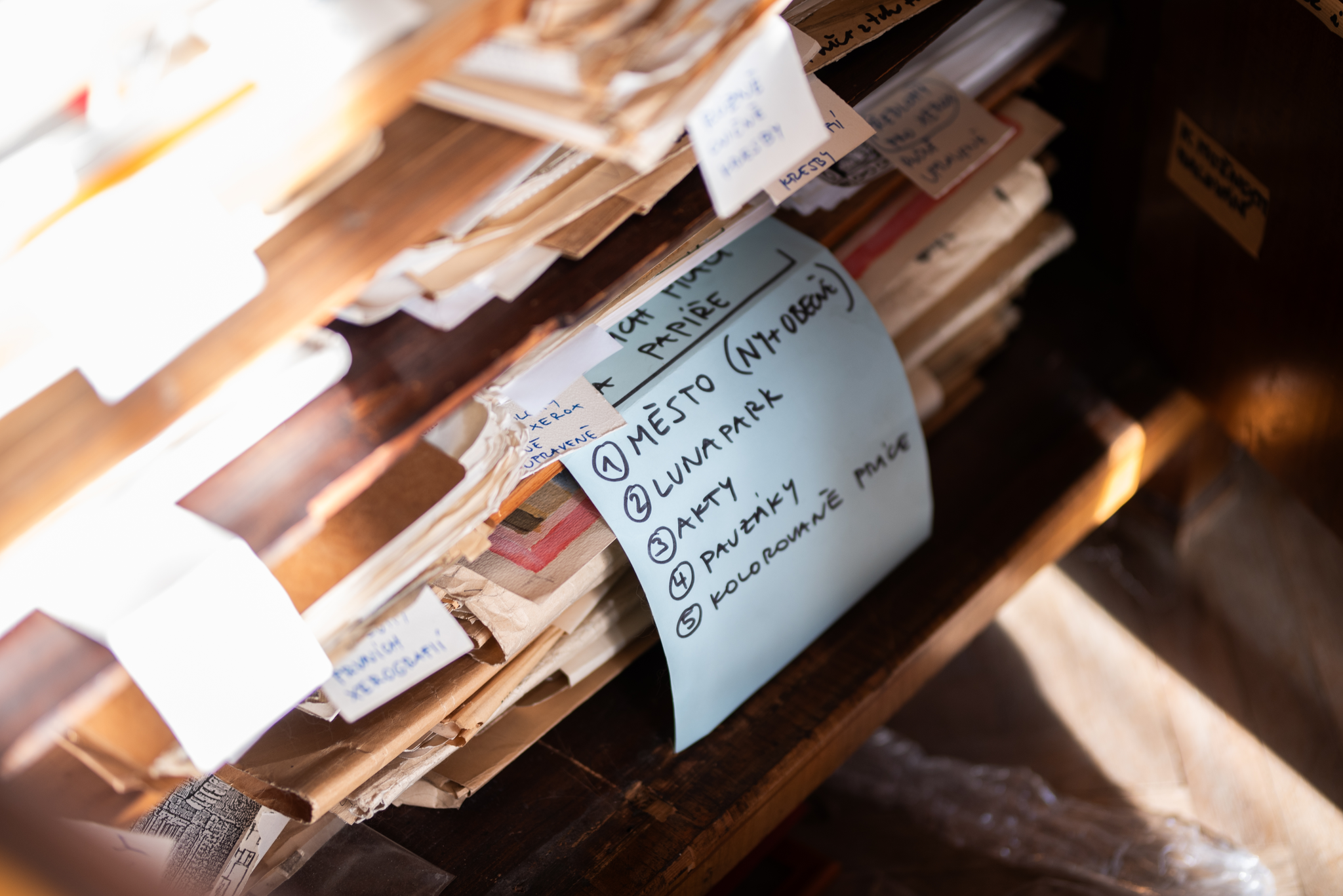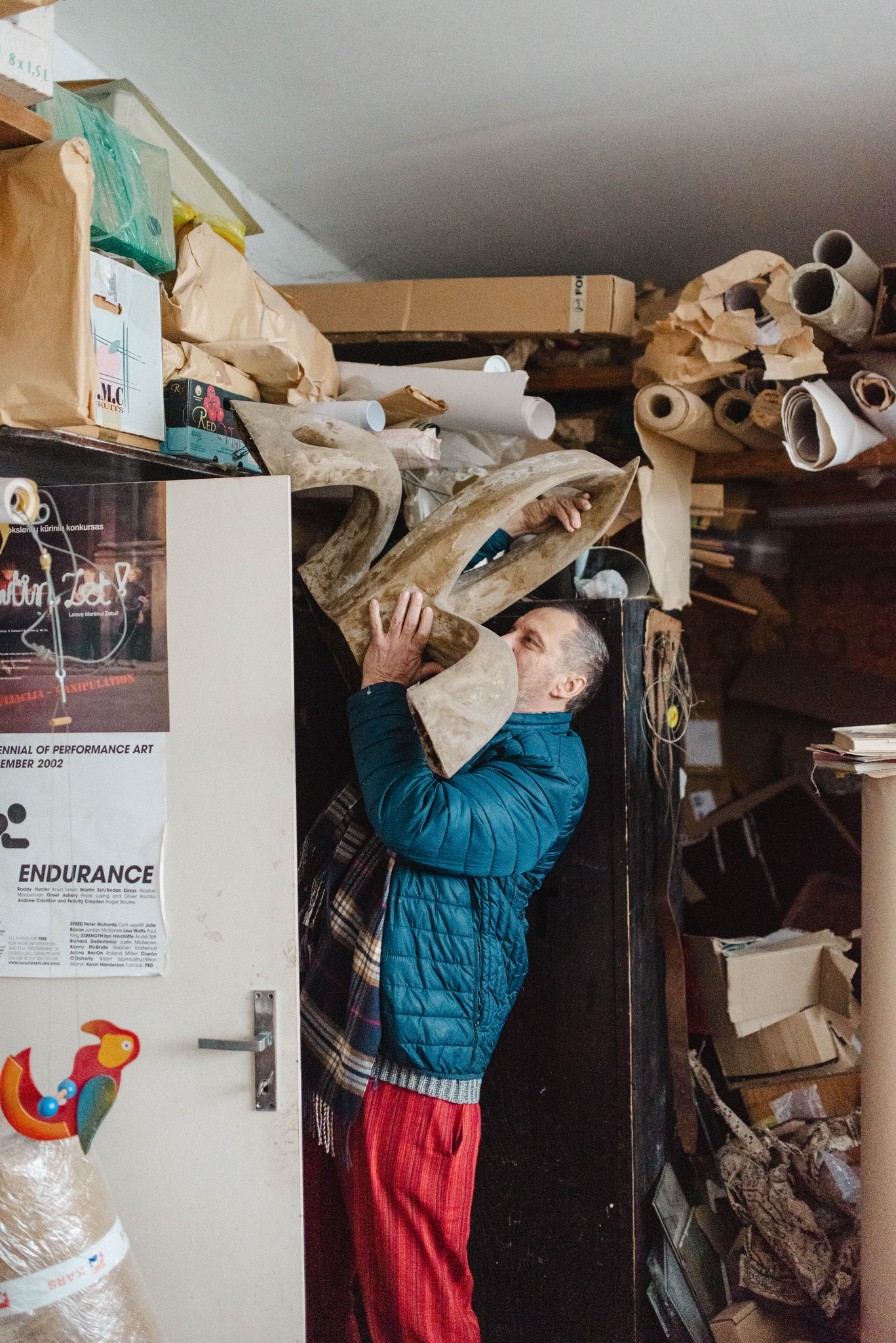CZ
Doktorský výzkum s názvem Způsoby nakládání s uměleckými pozůstalostmi v českém kontextu realizuji na Fakultě umění a designu UJEP od roku 2023 (vedoucí disertační práce je doc. Mgr. Anna Vartecká, Ph.D.). Výzkum byl podpořen tříletým grantem z programu Studentská grantová soutěž a jeho výstupem je výstava a odborná publikace.
Výzkum je kvalitativní a pracuje s případovými studiemi různých typů správ uměleckých pozůstalostí (a v některých případech tzv. pre-estates) v ČR a na Slovensku. Součástí výzkumu je Nadace Miloty Havránkové, Martin Zet (pozůstalost Miloše Zeta), Jana Písaříková (Archiv Jiřího Valocha), Archiv Márie Bartuszové, Nadační fond Zoubek Kmentová, Jiří Pátek (Moravská galerie, pozůstalost Dagmar Hochové), pozůstalost Pavla Brázdy, Vašulka Kitchen Brno, pozůstalost sester Válových a další.
Cílem je primární spracování dat této doposud opomíjené problematiky, komplexní mapování způsobů správy uměleckých pozůstalostí v ČR, vytvoření typologie správy, zmapování hlavních problémů při správě pozůstalostí v ČR a hledání vhodných modelů projektů, networkingových sítí, grantových a jiných možností ze zahraničí, které by mohly být aplikovatelné i v ČR. Ve výzkumu se také zaměřuji na roli správce/správkyně pozůstalosti.
Kontakt: petra.widzova@gmail.com
ENG
The doctoral research project titled “Ways of Managing Artists’ Estates in the Czech Context” has been carried out at the Faculty of Art and Design, Jan Evangelista Purkyně University in Ústí nad Labem, since 2023 (supervisor doc. Mgr. Anna Vartecká, Ph.D.). The research has been supported by a three-year grant from the Student Grant Competition program, and its outcomes include an exhibition and a scholarly publication.
The research is qualitative in nature and works with case studies of various types of management of artists’ estates (and, in some cases, so-called pre-estates) in the Czech Republic and Slovakia. Among the cases studied are the Milota Havránková Foundation, Martin Zet (estate of Miloš Zet), Jana Písaříková (Jiří Valoch Archive), Mária Bartuszová Archive, the Zoubek Kmentová Endowment Fund, Jiří Pátek (Moravian Gallery, estate of Dagmar Hochová), the estate of Pavel Brázda, Vašulka Kitchen Brno, estate of Válovy sisters and others.
The aim is to conduct a primary analysis of data related to this so far neglected topic, to comprehensively map the ways artists’ estates are managed in the Czech Republic, to develop a typology of estate management, to identify the main challenges in this field, and to seek suitable models of projects, networking structures, grant schemes, and other opportunities from abroad that could be applicable in the Czech context. The research also focuses on the role of the estate manager or administrator.
Contact: petra.widzova@gmail.com
CZ
Aktuální výstupy:
WIDŽOVÁ, Petra: Rozvíjení uměleckých odkazů na příkladech správy vybraných českých a slovenských uměleckých pozůstalostí a budoucích uměleckých pozůstalostí / Development of Artistic Heritage Based on Selected Examples of Czech and Slovak Artistic Heritage and Future Artistic Heritage Management in PROFIL, contemporary art magazine, č. 3, 2025, dostupné z: https://www.profilart.sk/
WIDŽOVÁ, Petra: Umělecké pozůstalosti a strategie přístupu k prodeji uměleckých děl in Hájková Barbora ed.: Sběratelství status, FUD UJEP, 2025
Připravované:
2026 - výstava Past told, future held přestavující pozici správce/kyně pozůstalostí na příkladu čtyřech českých pozůstalostí, galerie Industra Brno
2026 - Publikace mapující české prostředí uměleckých pozůstalostí a přípravu na budoucí správu pozůstalosti
ENG
Current outputs:
WIDŽOVÁ, Petra: Development of Artistic Heritage Based on Selected Examples of Czech and Slovak Artistic Heritage and Future Artistic Heritage Management, in PROFIL, contemporary art magazine, no. 3, 2025. Available at: https://www.profilart.sk/
WIDŽOVÁ, Petra: Artists’ Estates and Strategies of Approaching the Sale of Artworks, in Hájková, Barbora (ed.): Collecting Status, FUD UJEP, 2025
Upcoming:
2026 – Past Told, Future Held, an exhibition presenting the position of the estate administrator/manager through four Czech artists’ estates, Industra Gallery, Brno
2026 – A publication mapping the Czech environment of artists’ estates and approaches to future estate management
CZ
Počátky výzkumu
V roce 2017 jsem dokončila svou diplomovu práci na Fakultě umění a designu UJEP, která mapovala dosud nezpracovanou sochařskou pozůstalost českého umělce Miroslava Vystrčila. Během trpělivé práce, dohledávání, identifikaci a mapování děl, která zůstala po sochařově odchodu, jsem se ale především seznámila s vdovou paní Mňačkovou-Vystrčilovou, která se stala ústředním článkem v celém příběhu. Právě díky ní jsem si uvědomila, jak obtížná může být snaha o zachování umělecké pozůstalosti někoho blízkého, což se nakonec stalo tématem mé disertační práce.
Jelikož majetek manželů neměl vhodného dědice, který by se o pozůstalost chtěl starat, vzala si paní Mňačková za svůj hlavní cíl manželovo dílo zachránit a ideálně jej věnovat jako celek některé z pražských sbírkotvorných institucí. V této snaze postupovala logicky a velmi odhodlaně (tehdy jí bylo skoro devadesát let), ale dílo se ani tak nedařilo umístit, a to z mnoha důvodů. Problematické bylo například nezpracování díla, neexistující výzkum nebo jen nepatrné množství textů o autorovi, což částečně odráželo život, který převážně trávil v ústraní vlastní tvorby.
Text monografické diplomové práce nakonec vydala Fakulta umění a designu UJEP v roce 2018. V roce 2017 se také podařilo zrealizovat velkou retrospektivní výstavu Miroslava Vystrčila v GAVU Cheb, kterou jsem spolukurátorovala společně s ředitelem galerie Marcelem Fišerem. Výzkum, výstava, monografie i katalog velmi pomohly rozšířit povědomí o M. Vystrčilovi mezi odbornou veřejností. Následně se povedlo také zásadní díla umístit do sbírky GAVU Cheb a Galerie výtvarného umění v Náchodě. Některá se vydražila v prestižních aukčních domech a našla tak aspoň částečně svůj nový domov a pokračování existence.
ENG
Beginnings of the Research
In 2017, I completed my master’s thesis at the Faculty of Art and Design, Jan Evangelista Purkyně University in Ústí nad Labem, which mapped the previously unprocessed sculptural estate of Czech artist Miroslav Vystrčil. During the patient process of tracing, identifying, and documenting the works that remained after the sculptor’s passing, I became acquainted with his widow, Mrs. Mňačková-Vystrčilová, who became a central figure in the entire story. It was thanks to her that I realized how difficult it can be to preserve the artistic estate of a loved one—an experience that eventually became the topic of my doctoral research.
Since the couple had no suitable heir willing to care for the estate, Mrs. Mňačková made it her main goal to save her husband’s work and, ideally, to donate it as a whole to one of Prague’s collecting institutions. She pursued this goal logically and with remarkable determination (she was nearly ninety years old at the time), yet despite her efforts, the work could not be placed—due to various reasons. Among the main issues were the lack of processing of the oeuvre, the absence of prior research, and the minimal number of texts written about the artist, which in part reflected the life he led—largely withdrawn in his own creative solitude.
The text of the monographic thesis was eventually published by the Faculty of Art and Design, UJEP, in 2018. That same year, a major retrospective exhibition of Miroslav Vystrčil was realized at the Gallery of Fine Arts in Cheb (GAVU Cheb), which I co-curated together with the gallery’s director, Marcel Fišer. The research, the exhibition, the monograph, and the accompanying catalogue all significantly helped to raise awareness of Vystrčil’s work among the professional public. Subsequently, key pieces were successfully placed in the collections of GAVU Cheb and the Gallery of Fine Arts in Náchod. Some works were later sold through prestigious auction houses, thus finding at least a partial new home and continuation of their existence.






